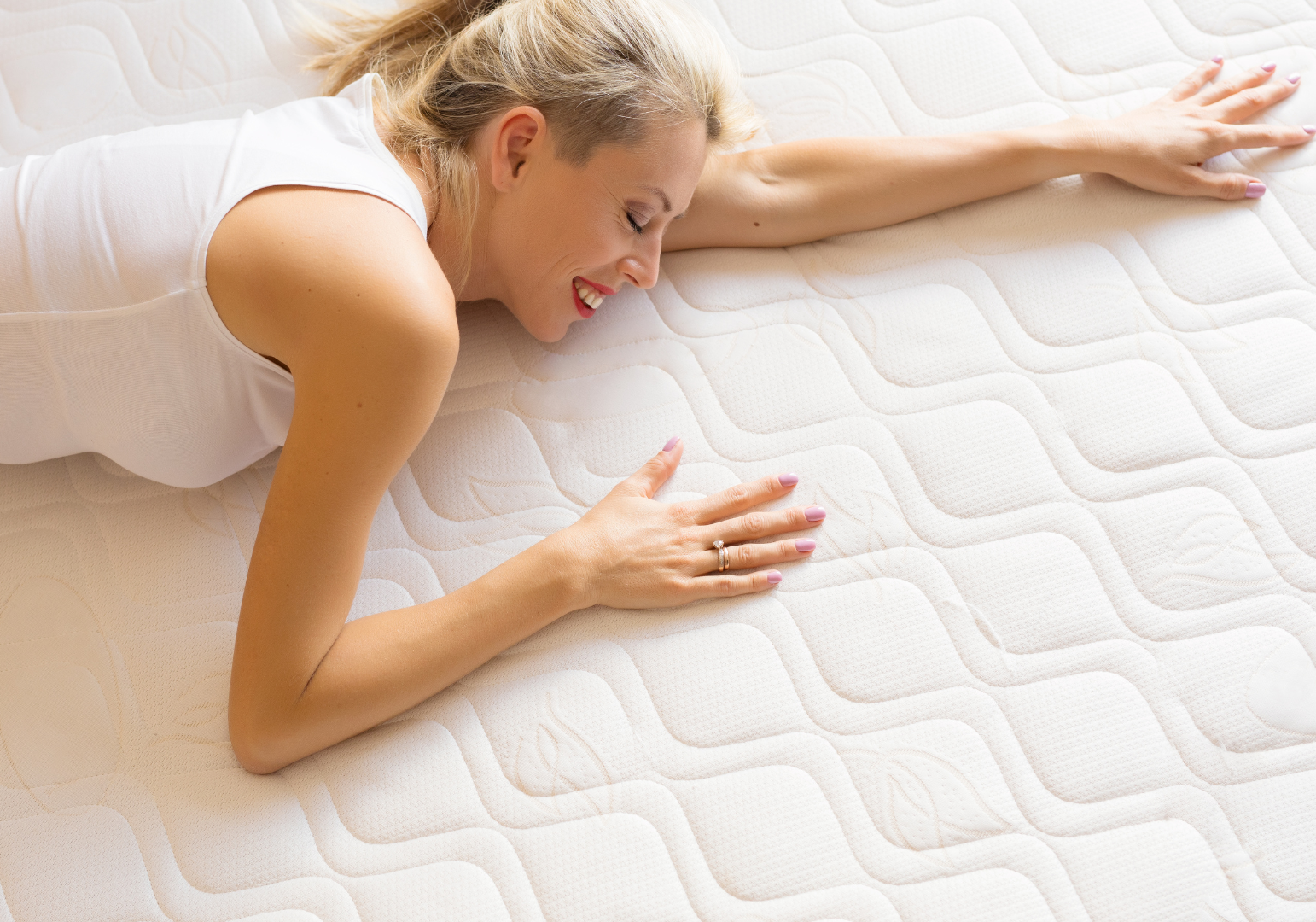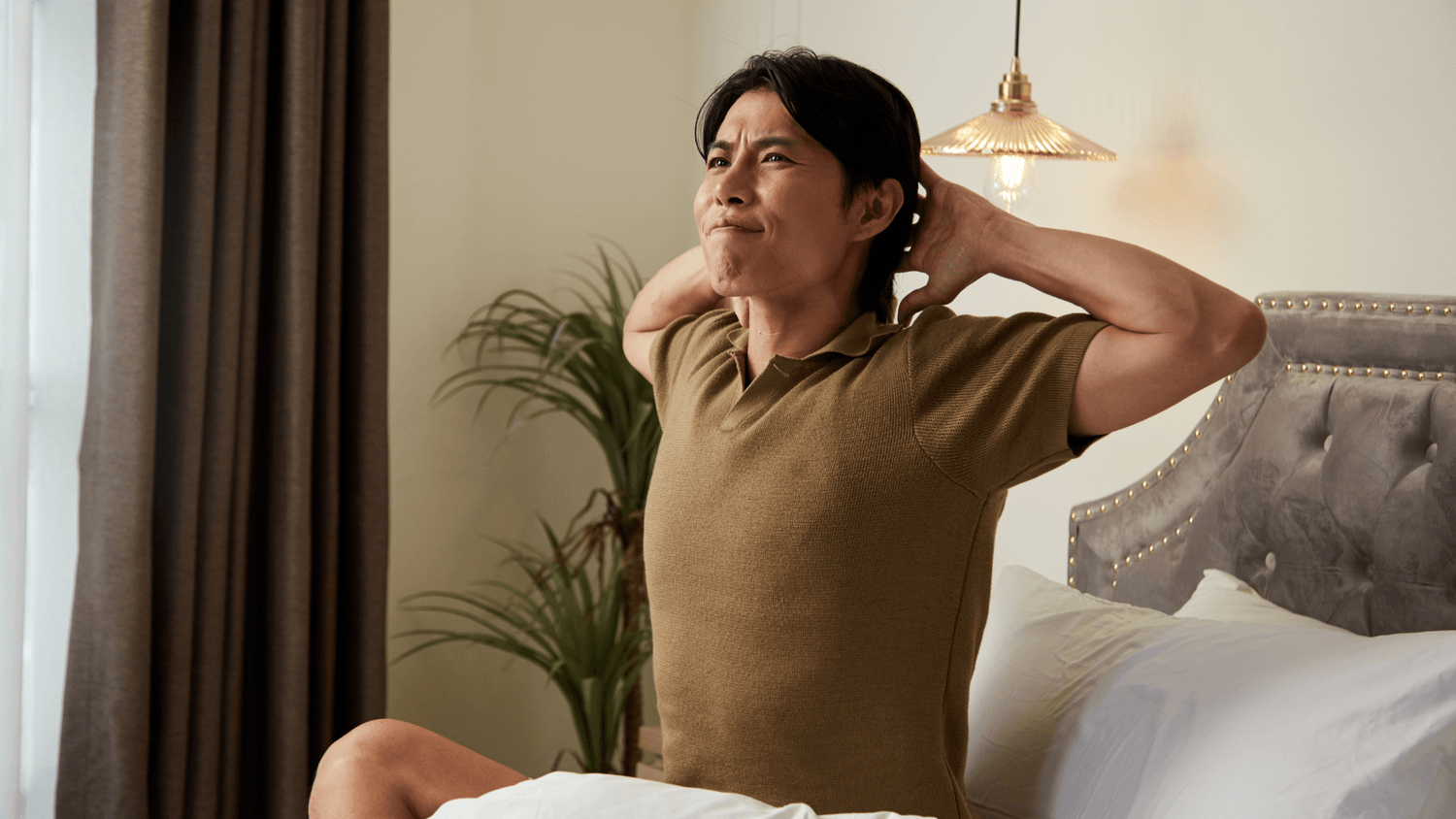Sciatic Nerve Pain When Lying Down: Best Mattresses and Relief Tips

Ever try to get a good night's sleep only to have sciatic nerve pain when lying down keep you awake? You're not alone. Sciatica can turn bedtime into a battle, leaving many wondering why sciatica hurts when lying down and how to find relief. The constant discomfort can disrupt more than just your sleep; it affects your energy and mood, impacting daily life.
Finding the best mattress for sciatic pain could be your first step toward restful nights and pain-free mornings. In this post, we'll explore solutions that could reshape how you sleep, ensuring comfort and relief.
What is Sciatic Nerve Pain?
Sciatic nerve pain, often simply called sciatica, is something that can disrupt comfort in our daily lives, especially when it becomes a nagging presence at night. Imagine trying to relax, but instead, feeling a sharp shooting pain that starts in your lower back and travels down your leg. This condition specifically becomes a nuisance when trying to find comfort in bed, making the quest for the "best mattress for sciatic pain" more significant. Let's explore what sciatica entails and what causes this discomfort.
Symptoms of Sciatic Nerve Pain
Sciatica's symptoms can vary greatly among individuals. Recognizing these signs is essential for addressing and managing this pain effectively. Common symptoms include:
- Shooting Pain: A sharp, shooting pain that radiates from the lower back down to the leg.
- Numbness: Many experience a sensation of numbness that follows the path of the sciatic nerve.
- Tingling Sensation: Often described as "pins and needles" in the legs or feet.
- Weakness: Some people might feel weakness in the affected leg, affecting mobility.
- Uneven Pain: "Sciatica hurts when lying down" is a frequent complaint, as positional changes can alter pain intensity.
Each person may experience these symptoms differently, depending on how the sciatic nerve is irritated.
Causes of Sciatic Nerve Pain
Understanding the causes of sciatica is crucial in finding effective relief. Several underlying conditions might lead to sciatica, such as:
1. Herniated Disk: A common cause where a disk in the spine presses against the sciatic nerve.
2. Spinal Stenosis: This narrowing of the spinal canal can put pressure on the nerves, leading to sciatica.
3. Piriformis Syndrome: A condition where the piriformis muscle irritates the sciatic nerve, causing pain.
4. Degenerative Disk Disease: As disks wear down, they can irritate the sciatic nerve.
5. Trauma or Injury: Sudden injuries or accidents can also lead to sciatic nerve pain, especially if they affect the lower back.
Understanding what causes your specific symptoms can guide you to better sleep solutions and the right "best mattress for sciatic pain."
The Impact of Lying Down on Sciatic Pain
Experiencing sciatic nerve pain when lying down can disrupt your sleep and overall well-being, raising the seemingly simple act of bedtime into a significant hurdle. But why does sciatica worsen when we lie down, and how can we adjust our positions to ease this discomfort? Understanding these mechanics is crucial to finding relief.
Why Sciatica Hurts When Lying Down
Ever notice how your sciatica seems to scream louder at night? There's a reason for this. When you lie down, the position of your spine changes, which can impact the sciatic nerve. As you recline, the spinal column may shift slightly, leading to added pressure on already irritated nerves. Blood flow might also increase toward the inflamed area, ramping up the sensation of pain.
Furthermore, the lack of movement during sleep can cause stiffness, making any existing irritation feel more pronounced. Sleep positions that do not support natural spine alignment can exacerbate the issue, leading to more discomfort as the night progresses. That's why understanding how your body interacts with the surfaces you sleep on becomes essential.
Positions That Relieve Pain
Changing your sleeping position can be a game-changer when dealing with sciatica. Not all positions are created equal, and some can significantly reduce pressure on the sciatic nerve, providing much-needed relief.
Here are a few positions that may help alleviate the pain:
1. Side sleeping with a pillow between the knees: Keeping your knees slightly bent and placing a pillow between them can help align the hips and spine.
2. Lying flat with a pillow under your knees: By slightly elevating your knees, you reduce the tension in your lower back, minimizing nerve pressure.
3. Fetal position: Curling up may help create space around the nerve roots.
4. Reclined position: Using a recliner or an adjustable bed to elevate the back and legs can help some people find comfort.

These adjustments might require experimentation to see what works best for your body. Remember, the goal is to maintain a neutral and supported spine for optimal relief and comfort.
Choosing the Best Mattress for Sciatic Pain
Struggling with sciatic nerve pain when lying down can make finding the right mattress feel like a daunting task. But just like the right pair of shoes, the perfect mattress can make all the difference in comfort and relief. This section will guide you in choosing the best mattress for sciatic pain, so you can wake up refreshed and ready for the day.
Features of a Good Mattress for Sciatica
When sciatica hurts when lying down, selecting a mattress that offers the right support is crucial. What should you look for?
- Firmness Level: A medium-firm mattress often provides the best balance of support and comfort. It should be firm enough to support spinal alignment but soft enough to relieve pressure points.
- Support: Look for mattresses that offer robust support to maintain spine neutrality, reducing strain on the sciatic nerve.
- Material: Memory foam and latex are popular choices as they conform to body shape, supporting pressure relief.
- Temperature Regulation: Heat retention can disrupt sleep. Consider mattresses with cooling technology or breathable materials.
- Motion Isolation: If you share a bed, a mattress with good motion isolation prevents partner movements from disturbing your rest.
With these features in mind, finding the right match can provide the support your body craves, easing sciatic nerve pain when lying down.
Top Recommended Mattresses
To help you make a more informed decision, here are some of the top mattresses known for helping alleviate sciatica pain.
1. Saatva Classic: This hybrid mattress combines support with a plush comfort layer, ideal for those seeking relief without sacrificing luxury.
2. Tempur-Pedic TEMPUR-ProAdapt: Known for its pressure-relieving properties, this mattress adapts to your body's shape for personalized support.
3. Purple Mattress: With its unique hyper-elastic polymer grid, it provides both support and cooling, helping minimize pain.
4. Helix Midnight Luxe: Offers zoned support for targeted pressure relief, which is crucial for sciatica sufferers.
5. Layla Memory Foam: This mattress is flippable, with two firmness levels, allowing for flexibility based on your preference.
By targeting specific needs with these recommended options, you can improve your sleep quality and reduce the impact of sciatica.
Home Remedies and Treatments for Sciatic Nerve Pain
Dealing with sciatic nerve pain can feel like a relentless challenge, especially when it intensifies at night. Thankfully, several home remedies and treatments can offer relief, helping to ease discomfort and improve quality of rest. Let's explore some practical approaches you can incorporate into your routine for better management of sciatic pain.
Stretching and Exercise
Physical activity plays a crucial role in alleviating sciatica discomfort. Think of your muscles as elastic bands; they need regular stretching to maintain flexibility and prevent stiffness. Keeping active helps reduce inflammation and pressure on the sciatic nerve.
- Daily Stretching: Incorporate simple exercises like the knee-to-chest stretch or the piriformis stretch to help relieve tension.
- Low-Impact Exercises: Activities such as swimming or walking can increase blood flow and promote healing without putting extra strain on your back.
- Yoga and Pilates: These practices focus on core strength and flexibility, which are essential for supporting your spine and easing nerve pain.

Regular, gentle activity can be a game-changer, helping manage pain and preventing future flare-ups. Ask yourself: are you moving enough to keep sciatica at bay?
Heat and Cold Therapy
Managing sciatic nerve pain when lying down can often be improved with strategic use of heat and cold therapy. But when, and how, should you use them?
Cold Therapy:
- Use cold packs or a bag of frozen peas wrapped in a towel.
- Apply to the painful area for 15-20 minutes.
- Best used when pain is acute or during initial injury to reduce inflammation.
Heat Therapy:
- Use a heating pad or warm compresses.
- Apply for 15-20 minutes to the affected area.
- Great for muscle relaxation and increasing blood flow, helpful for chronic pain relief.
Experiment with heat and cold to find what works best for you. Sometimes, alternating between the two can offer balanced pain reduction.
When to Seek Professional Help
If you've been dealing with sciatic nerve pain when lying down, it can be both frustrating and exhausting. While some home remedies and lifestyle changes may offer relief, there are times when professional intervention becomes essential. It's important to know when to seek help to avoid worsening the condition.
Signs of Severe Sciatic Pain

Certain symptoms of sciatica demand immediate medical attention. If you notice any of the following signs, it's a strong indicator that you should seek professional help:
- Intense Leg Pain: If the shooting pain in your leg persists and becomes unmanageable, it's time to consult a healthcare provider.
- Severe Numbness or Tingling: This could indicate nerve damage and should not be ignored.
- Muscle Weakness: If you experience significant weakness in your leg or foot, it could affect your mobility.
- Loss of Bladder or Bowel Control: This is a medical emergency and requires immediate attention.
- Pain Worsening Over Time: If your sciatica hurts when lying down and continues to intensify, it's crucial to get evaluated.
These symptoms may suggest a more serious underlying issue, necessitating professional evaluation and intervention.
Potential Treatment Options
When home remedies don't suffice and severe symptoms persist, medical treatments and interventions offer a lifeline. Here are some potential options professionals might consider for alleviating sciatic pain:
1. Physical Therapy: A physical therapist can guide you through exercises designed to strengthen the muscles supporting your spine, providing significant relief.
2. Medications: Anti-inflammatory drugs, muscle relaxants, or corticosteroid injections can help reduce pain and swelling.
3. Surgery: In extreme cases where other treatments fail, options such as discectomy or laminectomy might be recommended to relieve pressure on the nerve.
4. Chiropractic Adjustments: Some patients benefit from spinal adjustments that help realign the spine and relieve nerve irritation.
5. Acupuncture: This alternative therapy can provide relief by targeting pressure points related to sciatica.
The best course of action depends on individual circumstances, so working closely with a healthcare provider is essential for determining the right approach.
Conclusion
Addressing sciatic nerve pain when lying down is crucial for reclaiming comfort and improving sleep quality. Whether it’s adjusting your sleeping position or selecting the best mattress for sciatic pain, these proactive steps can significantly reduce discomfort. Sciatica hurts when lying down because of pressure on the nerve, but changing how you approach bedtime can make a real difference.
Embrace the solutions discussed and experiment to discover what works best for you. Recognize the importance of small adjustments for big relief. Don't wait for the pain to dictate your nights; take control and seek what soothes and heals. Keep sharing your experiences and staying informed, as ongoing exploration can lead to better outcomes.

You Can Fix Your Back...
You Just Need The Right Program
- Reduce your sciatic pain in days, not weeks.
- No more endless doctor visits—take control at home.
- Empower yourself with a program backed by real results.
- 2024 Sciatica Self Treatment / Back Pain Self Treatment














